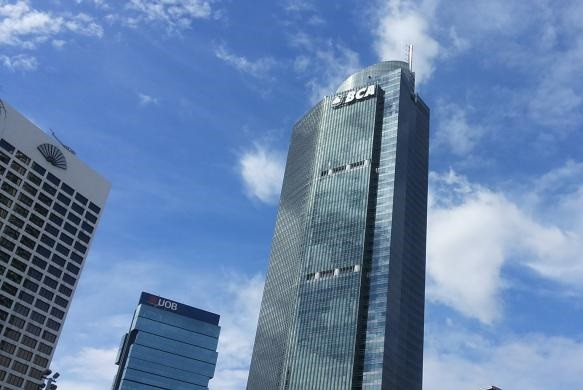Modest loan growth may be drag on banking sector in 2023
Analysts project modest loan growth next year for Indonesia's banking industry, citing looming uncertainties and unfavorable conditions stemming from the expected global downturn.
Change text size
Gift Premium Articles
to Anyone

M
odest loan growth is projected for Indonesia in 2023 in contrast to last year’s surge in credit growth, as lenders and borrowers are likely to face tougher conditions stemming from looming global and local uncertainties.
Experts told The Jakarta Post that this year would be challenging for both banks and borrowers as the global economy weakened and the commodities boom subsided. At the same time, many central banks, including Bank Indonesia (BI), were expected to follow the interest rate hikes of the United States Federal Reserve (Fed).
Domestic industries with high reliance on exports were certain to see muted growth, but all sectors were likely to feel the pain from high interest rates that caused an increase in borrowing as well as input costs, partly due to prolonged supply chain disruptions and rupiah depreciation.
Tengfu Li, financial institutions analyst at Moody’s Investors Service, told a virtual press briefing on Dec. 7 that banks would gradually pass on the rate hike to borrowers, which could deter loan access. However, he added that he also expected lenders to keep their rates competitive to remain attractive.
Meanwhile, businesses had started taking a cautious approach toward entering 2023, given the potential uncertainties from a relatively bleak global economic outlook and Indonesia heading into a “political year”.
“We expect loan growth to moderate to 10 percent [year-on-year/yoy],” Li said.
Read also: Expected increase in loan growth points to ongoing recovery
Li’s forecast was much weaker than the yearly credit growth projection for 2022, which still hovered at around 12 percent.
It was also much lower than Bank Indonesia’s projection of between 10 and 12 percent yoy, marking slight growth from last year’s target of between 9 and 11 percent yoy.
Many experts expected weaker loan growth in 2023 compared to the previous year in line with the worsening national economic outlook.
Ajib Hamdani, who heads the economic policy analysis division at the Indonesian Employers Association (Apindo), said in November that firms might not be as keen to apply for loans in 2023, as they were anticipating prolonged high inflation and a decline in purchasing power.
Major Indonesian banks were split on what to do, despite announcing they would continue to aim for lucrative sectors that were generally resilient during a crisis, such as commodities, telecommunications and food and beverages.
State-owned lender Bank Mandiri said it would continue to accelerate lending in 2023, implying that it was still possible to achieve higher loan growth. Meanwhile, private lender BCA aimed to maintain its loan growth for this year, estimated at 12 percent yoy.
BRI projected a slightly lower disbursement rate than BI’s 2023 target of between 9 and 11 percent yoy growth, with the state-owned lender opting for a conservative target of 9 percent relative to its 2022 target of 10 percent.
BI Governor Perry Warjiyo on Dec. 22 expressed confidence that increasing the central bank’s benchmark rate would not trigger a significant hike among lenders, adding that BI would ensure adequate liquidity so banks could limit increases to their lending rates.
Financial Services Authority (OJK) chairman Mahendra Siregar said on Dec. 21 that loan disbursements would continue to contribute to the economy in 2023, implying that he expected significant loan growth following 2022’s positive trend.
However, he cautioned banks not to celebrate prematurely over their high earnings and profits from 2022’s performance. The uncertainties looming over 2023 should not be taken lightly, he stressed, and banks should make the necessary preparations to weather the impacts.
“We remind banks to strengthen their provisioning. Don't be too euphoric about your profits and then rush to distribute dividends,” Mahendra said.
He also urged banks to keep a watchful eye over their exposure to vulnerable sectors, particularly those affected by market fluctuations and weakening demand.
Read also: OJK extends loan-restructuring phase for just three sectors
Moody’s’ Li said he expected a slight uptick in nonperforming loans (NPL) in 2023, when the OJK would end its loan restructuring program for all sectors aside from the textile and footwear, hotels and restaurants, and micro, small and medium enterprises (MSMEs) sectors.
He added that the termination of the OJK’s forbearance measure would not have a significant impact, as the number of restructured loans had declined with more borrowers able to make repayments.
Historical figures also showed that NPLs tended to grow in the event of a commodity price correction, Li noted, but 2023 would be different, as prices were likely to remain higher than pre-pandemic levels.
However, the outlook for the property sector was vastly different, as Moody’s had slashed it to negative amid the ongoing trend in high interest rates.









